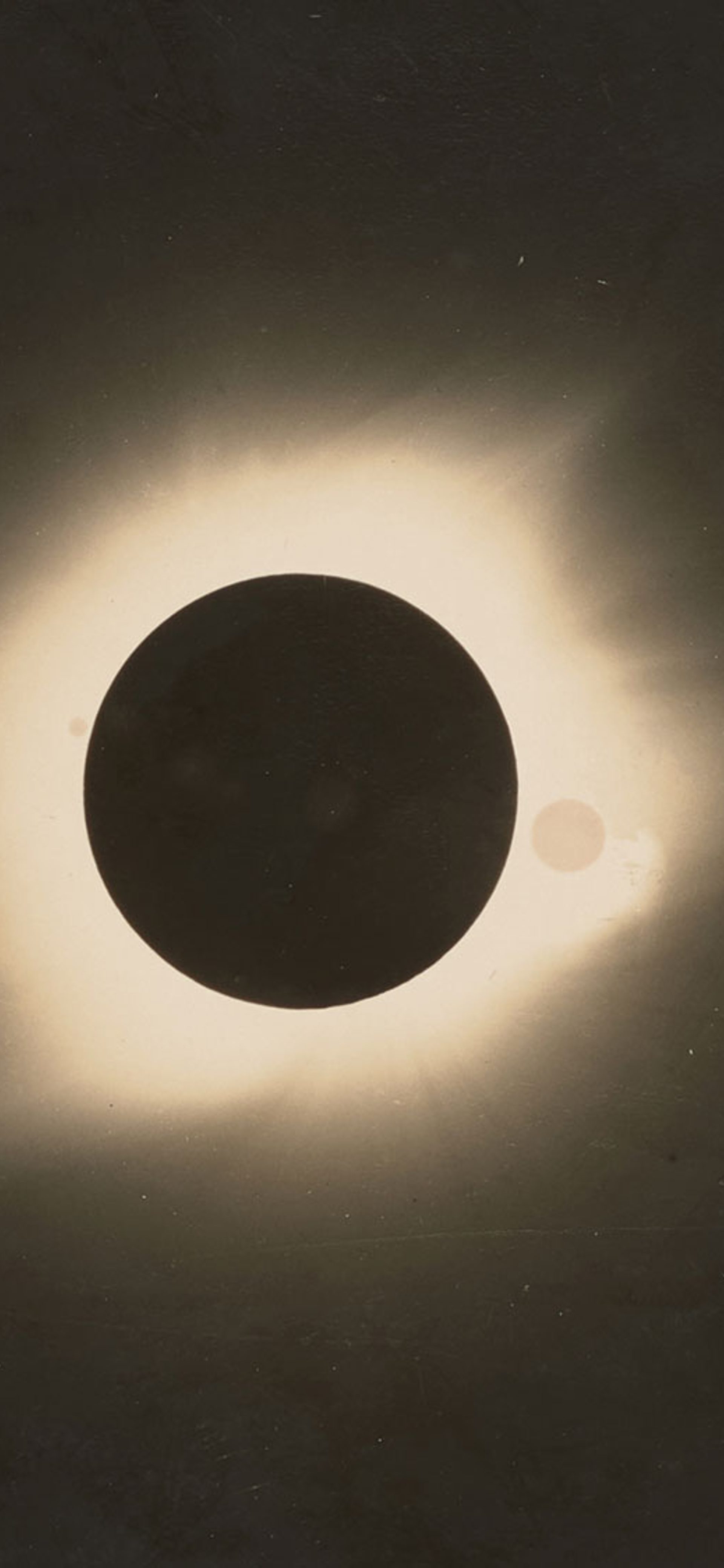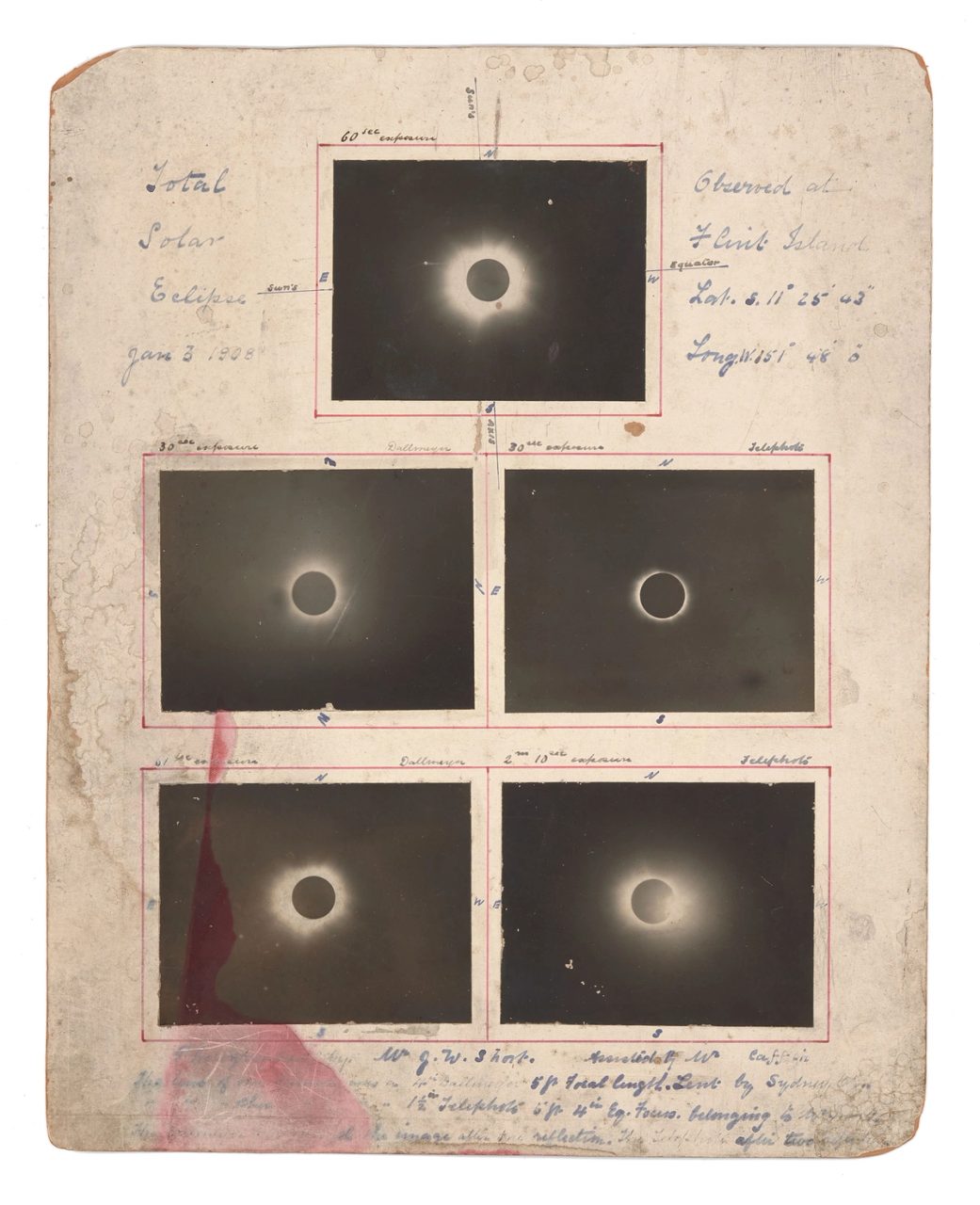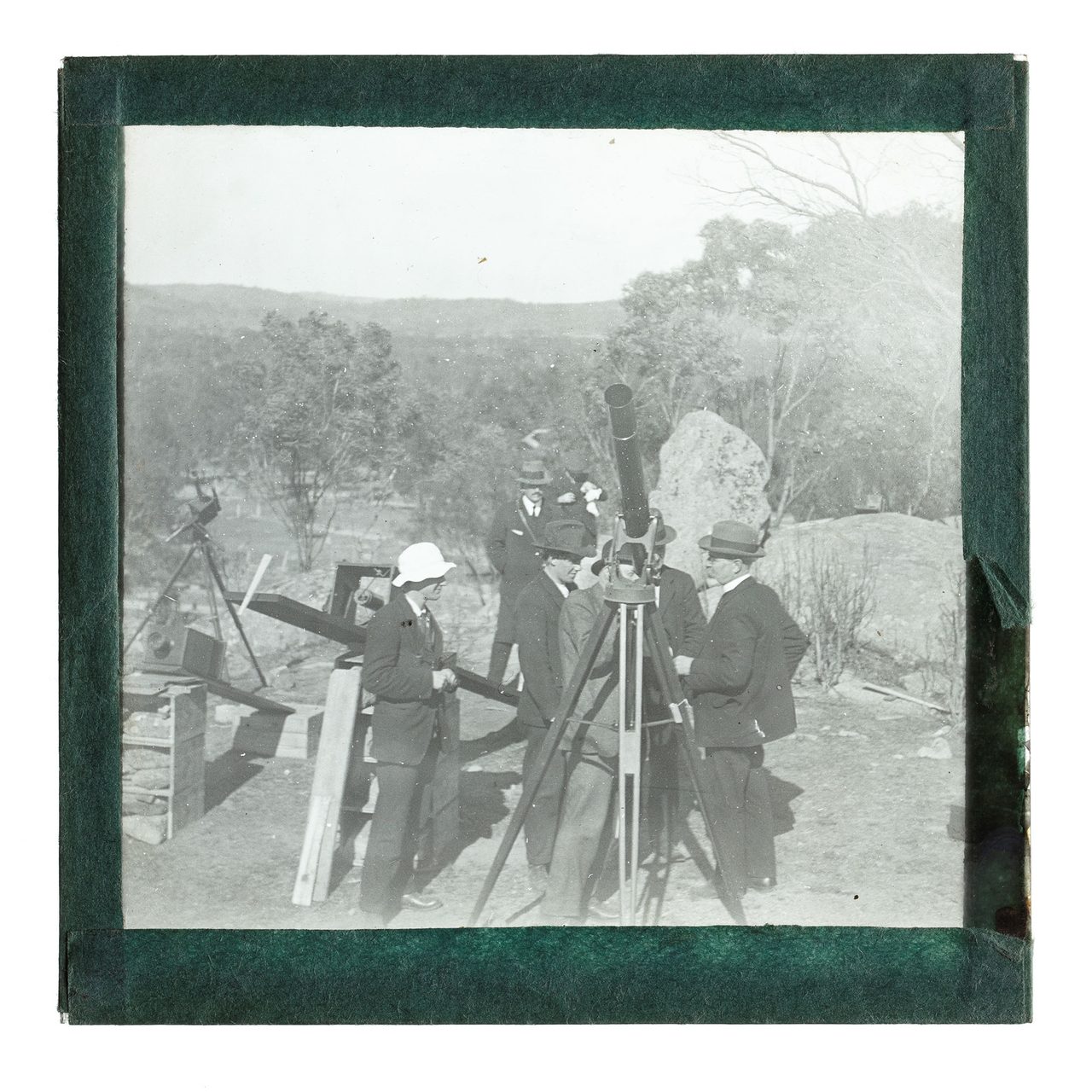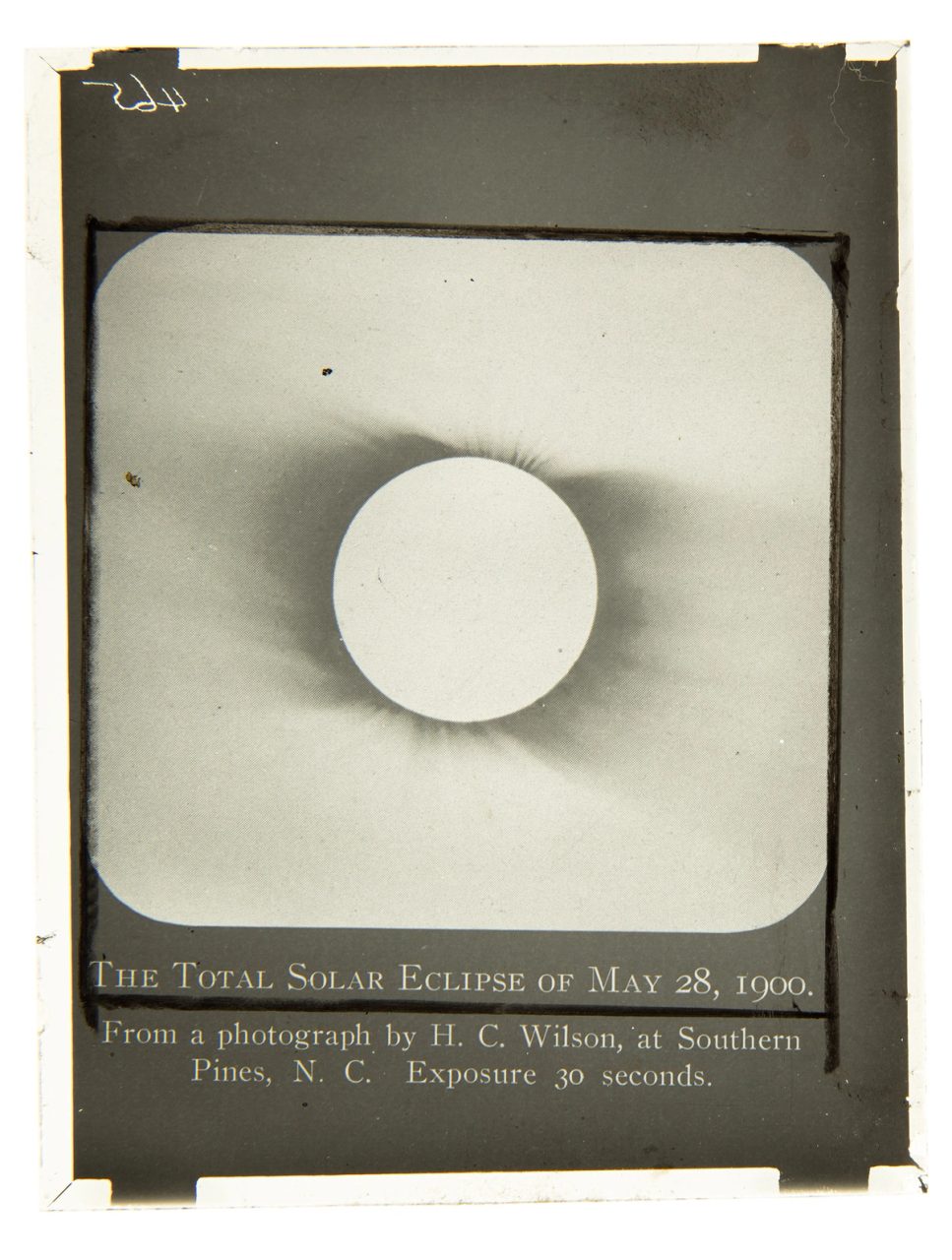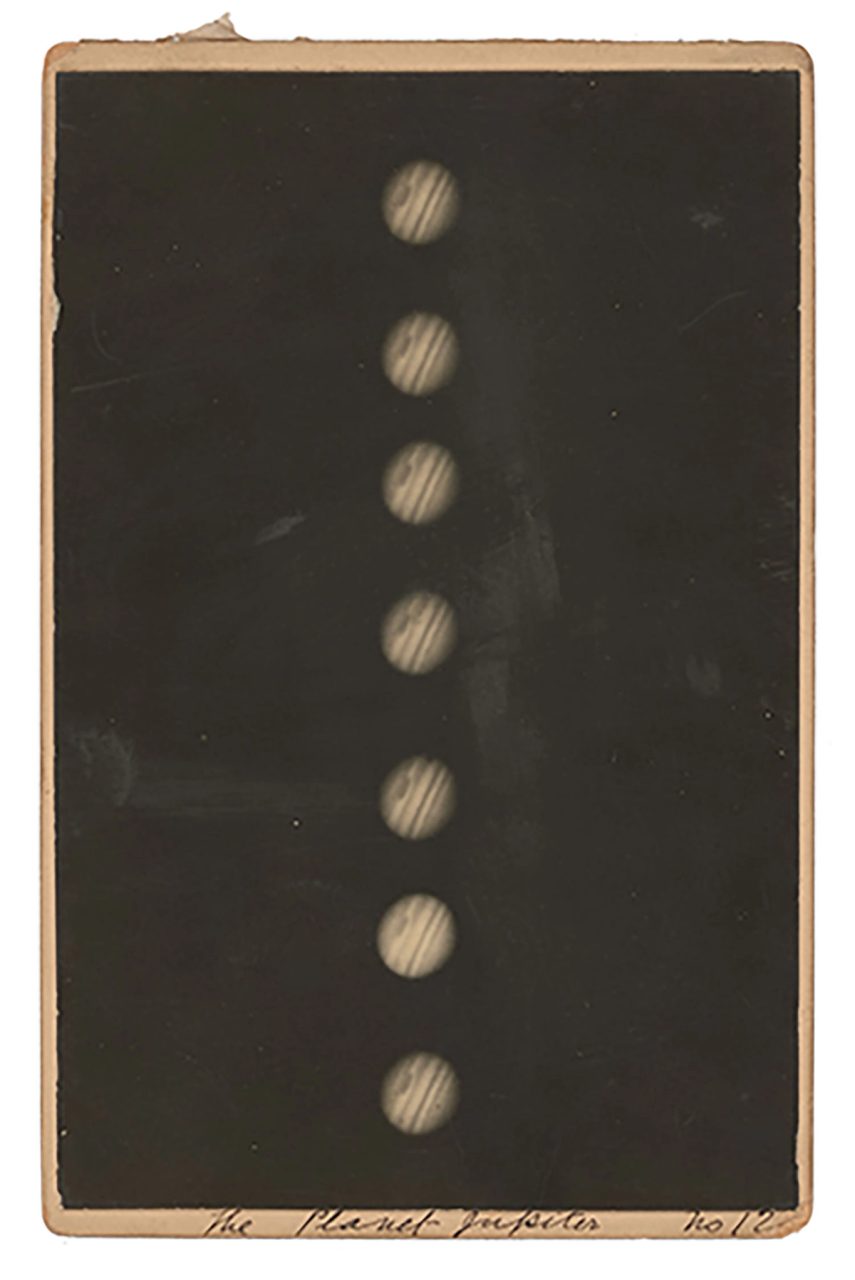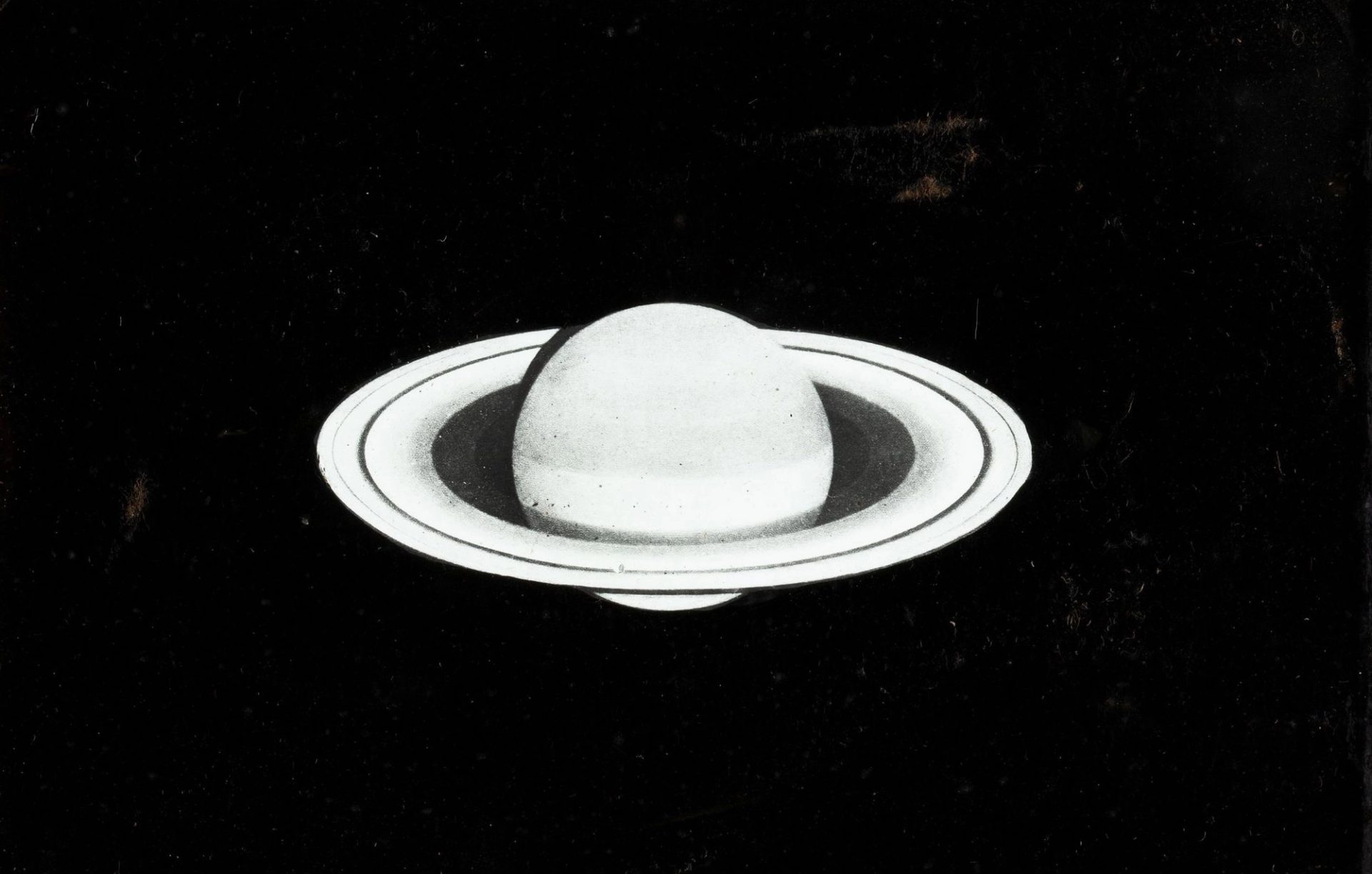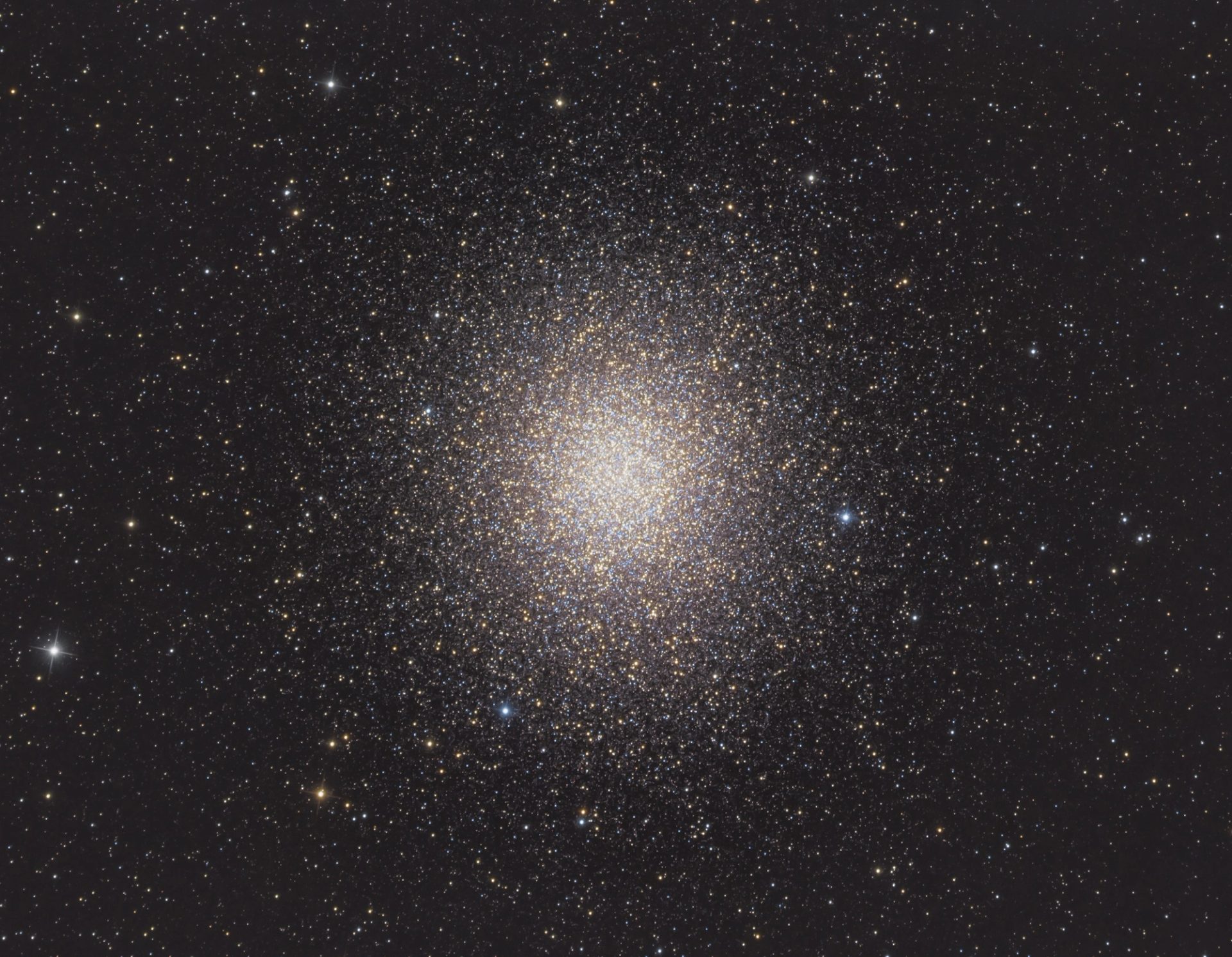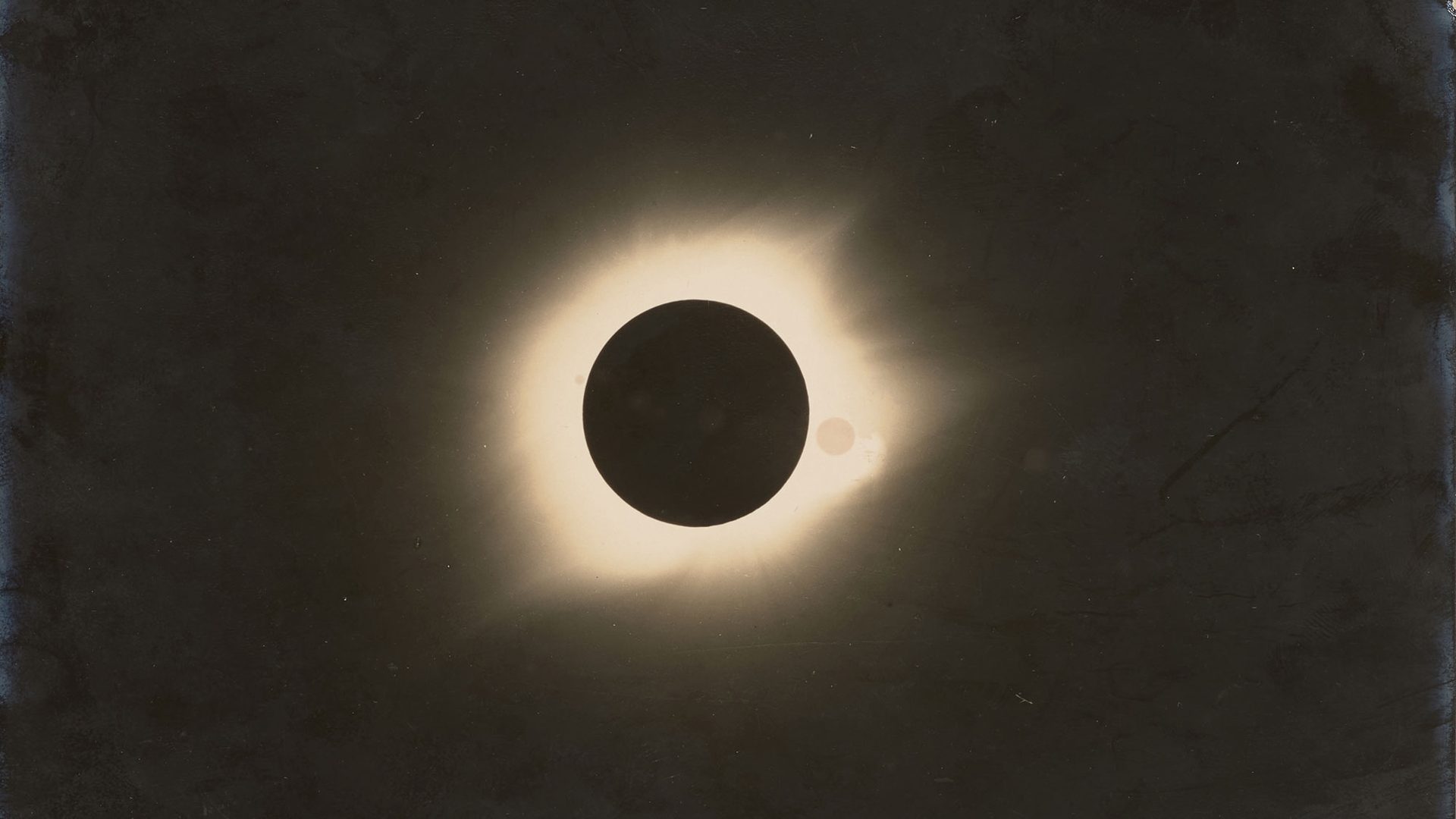Sky Guide April 2023

‘A total solar eclipse will be visible over the North West Cape area of Western Australia. Elsewhere in Australia a partial solar eclipse occurs. This is the first total solar eclipse over Australia since the Cairns eclipse of November 2012, with the next (over Australia) in 2028.’
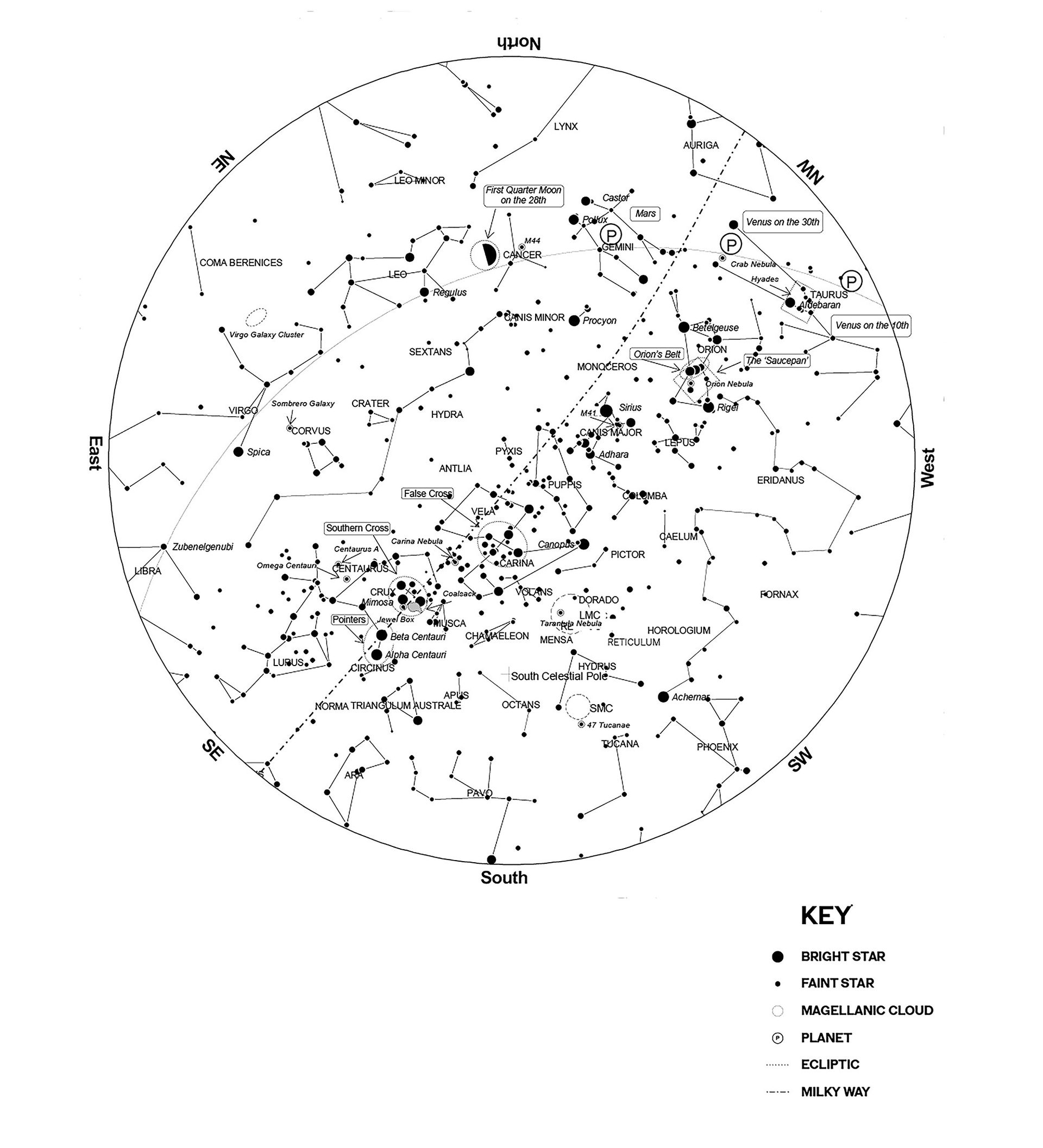
Total Solar Eclipse
This is the major astronomical highlight of 2023. A total solar eclipse will be visible over the North West Cape area of Western Australia. Elsewhere in Australia a partial solar eclipse occurs. This is the first total solar eclipse over Australia since the Cairns eclipse of November 2012, with the next (over Australia) in 2028.
If you are lucky enough, or began planning ahead several years ago, you will be on North West Cape on 20 April for the beginning just after 10am local time. For almost 3 hours the Moon creeps across the face of the Sun. But the main event lasts just 60 seconds from 11:29am local time – the Moon completely covers the Sun and a ghostly white solar corona surrounds a jet-black hole in the sky. It is awe-inspiring, terrifying, spiritual. And life-changing, if only because you will spend the rest of your life travelling to exotic and often remote parts of the globe to experience more totality (or trying to put in words what can only be experienced!)
If you are in other parts of Western Australia or the Northern Territory you will see a partial solar eclipse with most of the Sun covered by the Moon. As we cross the country eastwards less and less of the Sun is covered. In Sydney only about 10% of the Sun’s surface is covered by the Moon and the eclipse lasts from about 1:37pm – 3:15pm.
If you are on the North West Cape and experience totality you can and should observe with no eye protection – but only do this during the sixty-seconds of totality. At all other times and all other locations, you must use approved eye protection (solar glasses or filters) or another safe method (such as the projection method).
The Astronomical Society of Australia provides all the advice you need for viewing this eclipse safely – please read & heed this advice to avoid instant and permanent eye damage.
Constellations
Constellations represent groupings of stars that have been given a name. For millennia they have been used as a tool to share significant cultural stories. Today, they also help astronomers delineate portions of the sky and are a navigational tool for locating astronomical objects. This month these constellations dominate the autumn sky:
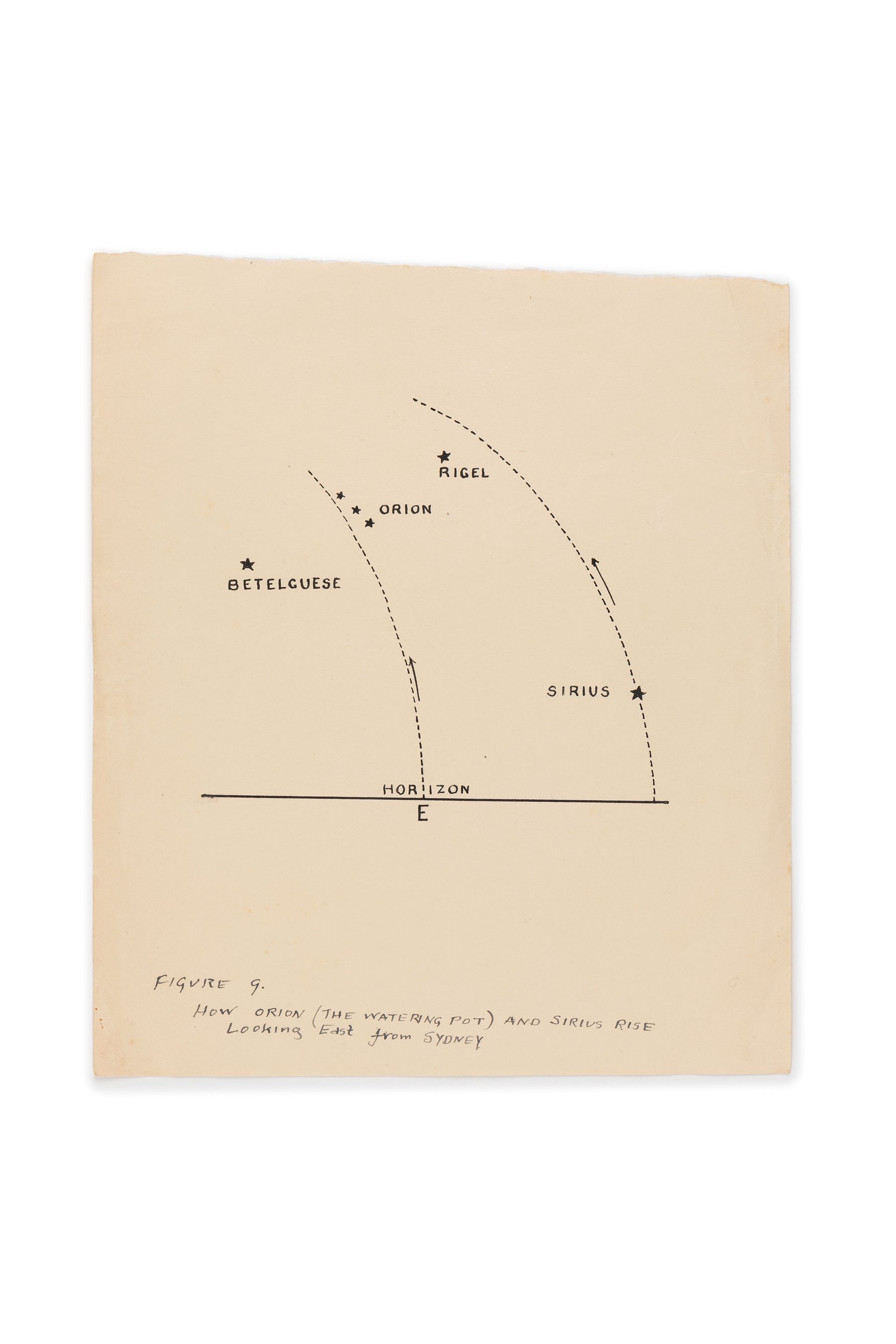
Southern Cross and Two Pointer stars This group of stars hang in the south-eastern sky during April evenings. The Southern Cross reaches its highest point in the sky, where it appears upright, at about 1am at the beginning of the month and by 10pm at the end of April. The Cross is the smallest of the 88 constellations and can be easily covered entirely by one hand. Close to the Cross are the two bright Pointer stars, about a hand’s width apart. A line drawn from Alpha Centauri (the name of the brighter Pointer) towards Beta Centauri (the other one) and onwards points towards the Cross. The Southern Cross is a modern constellation dating from the early 1500s.
Orion The Hunter is in the north-western sky and heading for the western horizon. Its likeness to a male figure was probably obvious to the earliest humans. The three stars of Orion’s belt at his waist separate his head & shoulders on the right from his sword and knees on the left. The well-known saucepan asterism consists of a base (Orion’s belt) and a handle (Orion’s sword) plus one additional star at the rim. With binoculars you will see a small hazy glow in the middle of the saucepan’s handle – this is the Orion Nebula, a starbirth cloud. The mythology of Orion is complex and often contradictory. However, he usually represents a tall, strong and handsome hunter.
Leo The Lion, one of the twelve constellations of the Zodiac, remains in the northern sky during April. The Lion earned a place amongst the constellations for being a fierce and powerful beast. To the Greeks he was the Lion of Nemea, killed by Hercules in the first of his twelve labours.
Canis Minor The Lesser Dog, is an obscure and small constellation usually ignored in the search for its dominant companion, Canis Major, the Greater Dog. On any April night high overhead you will see the very bright star Sirius in Canis Major. Facing north early in the evening, look below Sirius by slightly more than a handspan (with your hand at arm’s length) – the bright star here is Procyon in Canis Minor. And Procyon is just about all there is to the Lesser Dog! Like many constellations it looks nothing like its name. The star’s name comes from the Greek Prokyon meaning “before the Dog” and indeed it does rise before bright Sirius and Canis Major from the latitudes of ancient Greece. Canis Minor and Canis Major together are Orion’s hunting dogs.
Planets
This month Venus and Mars are our evening planets. Jupiter and Saturn appear in the morning sky. If you have trouble identifying planets from stars the Moon comes to your aid later in the month.
Venus is easily recognisable as a very bright and white ‘spotlight’ above the north-western horizon after sunset. Venus moves from Aries into Taurus at the beginning of the month. From April 11 to 13 Venus passes above the Pleiades star cluster, a compact group of young stars. Binoculars provide the best view of this encounter.
Mars reddish and much fainter than Venus, this planet spends April in the northern sky in Gemini. Earth continues to draw away from the red planet on our ‘inner track’ around the Sun so even through binoculars Mars looks small and unimpressive.
Jupiter the King of the planets, bright and yellowish, spends much of April too close to the Sun to be seen – in fact, it is precisely on the far side of the Sun on April 12. For those on the North West Cape of Western Australia on April 20, however, Jupiter will be visible beside the Sun when the Sun is totally eclipsed. At the end of the month it reappears in the eastern sky before dawn in Pisces, but it is very low down in the morning twilight.
Saturn is yellowish like Jupiter but fainter. It spends the month in Aquarius in the eastern sky at dawn.

Moon
Full Moon – Thursday April 6 at 2:34pm AEST
Last quarter – Thursday April 13 at 7:11pm AEST
New Moon – Thursday April 20 at 2:12pm AEST
First quarter – Friday April 28 at 7:20am AEST
On April 28 the Moon is at apogee, its furthest point from Earth in this lunar month. This is its closest apogee for the year.
Let the Moon be your guide to the planets. From the April 16 to 26 the Moon marks out the planets. On April 16 the crescent Moon is above and right of Saturn in the pre-dawn sky. On April 23 a thin crescent Moon is below and left of Venus in the evening sky. And on April 26 the crescent Moon is below and right of Mars in the evening sky.
Deep Sky
Explore the universe through your binoculars or telescope and take in some of the gems of the April sky. These look at their best with no Moon in the sky:
Orion nebula this is your last chance before winter to see this starbirth cloud. It looks particularly good from dark rural locations. But even in a light polluted city it’s worth viewing.
Jewel Box this colourful cluster of stars in the Southern Cross returns to our skies for its winter passage.
Messier 104, the Sombrero galaxy this edge-on spiral galaxy appears as an oval smudge in most telescopes with a dark band (of dust and gas) splitting it in two. Discovered by Mechain, not Messier, this galaxy is 30 million light years away.
Ghost of Jupiter also known by its catalogue number of NGC3242 this planetary nebula in Hydra is the remains of a dying star that has shed its outer layers. In a telescope its apparent size is similar to the planet Jupiter but in reality it is larger than our solar system. Our Sun is destined to look like this at the end of its life.
Other Events
In April 2022 also look out for Daylight Saving time ending on Sunday April 2 at 03:00am for NSW, ACT, Victoria, Tasmania and South Australia all your timing devices need to go back 1 hour. Your computer and smartphone should change automatically but on other devices you will need to manually put the clock back.
Learn More
Normally I’d suggest you consider purchasing the 2023 Australasian Sky Guide by Dr Nick Lomb, featuring an annual report of what’s in the sky and the latest astronomical findings. However, this year’s edition has already sold out! Thank you! The 2024 edition will be out later in the year. In the meantime, please find our monthly sky guide right here on our blog. You may, instead, like to pick up a copy of The Story of Sydney Observatory before it too sells out.
View the Star Map 04 April 2023, which shows the stars, constellations and planets visible in the night sky from anywhere in Australia. Check out these resources for getting started.









